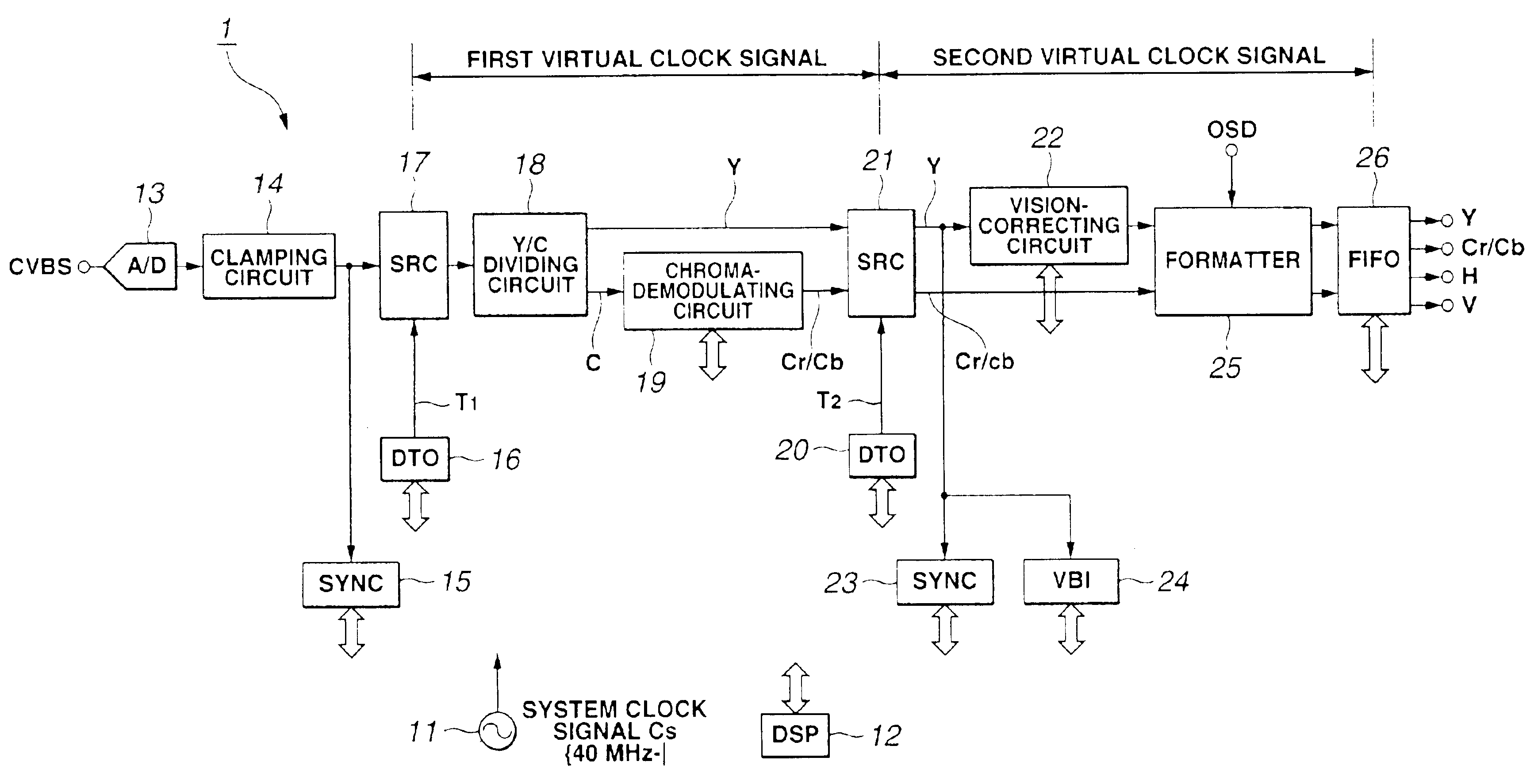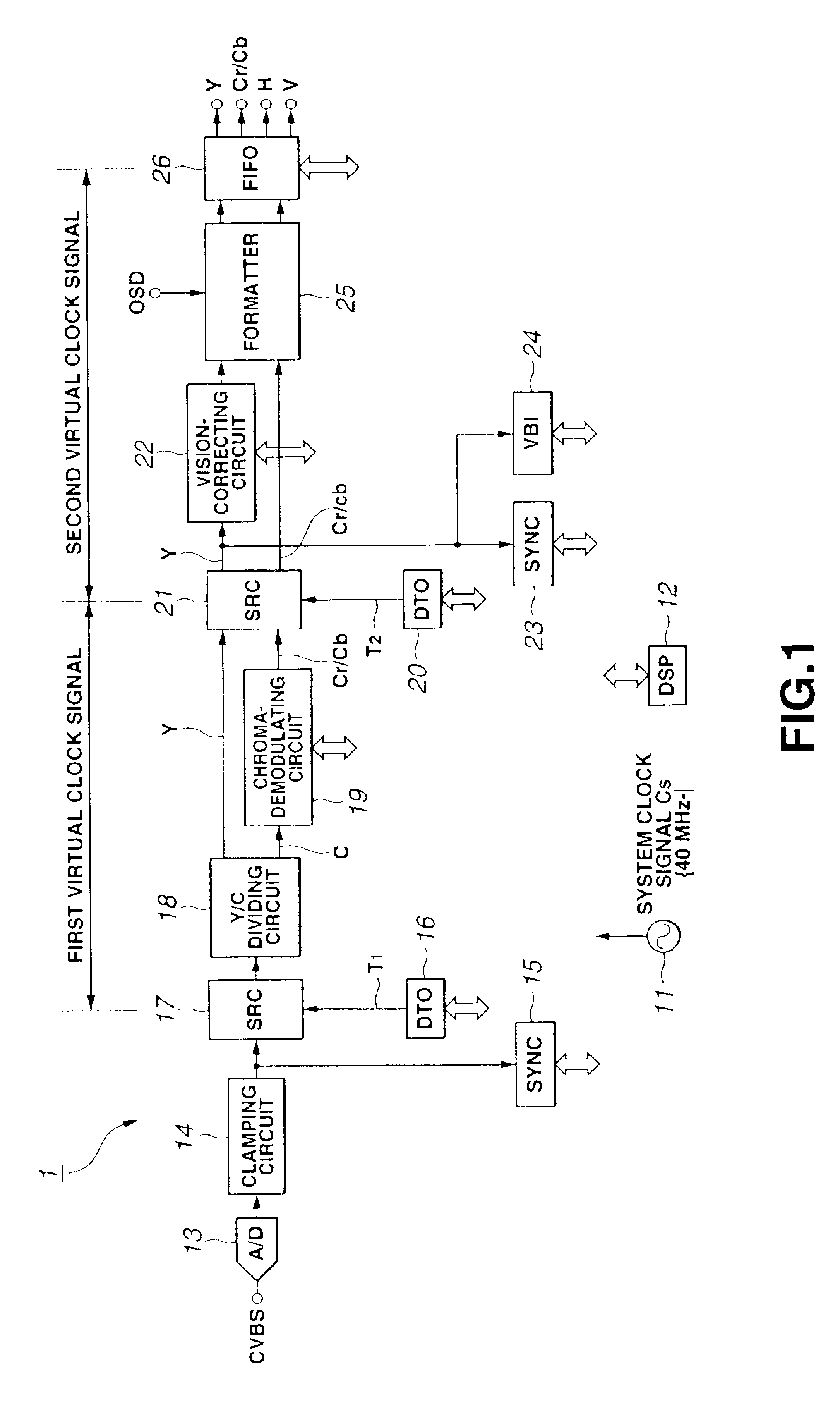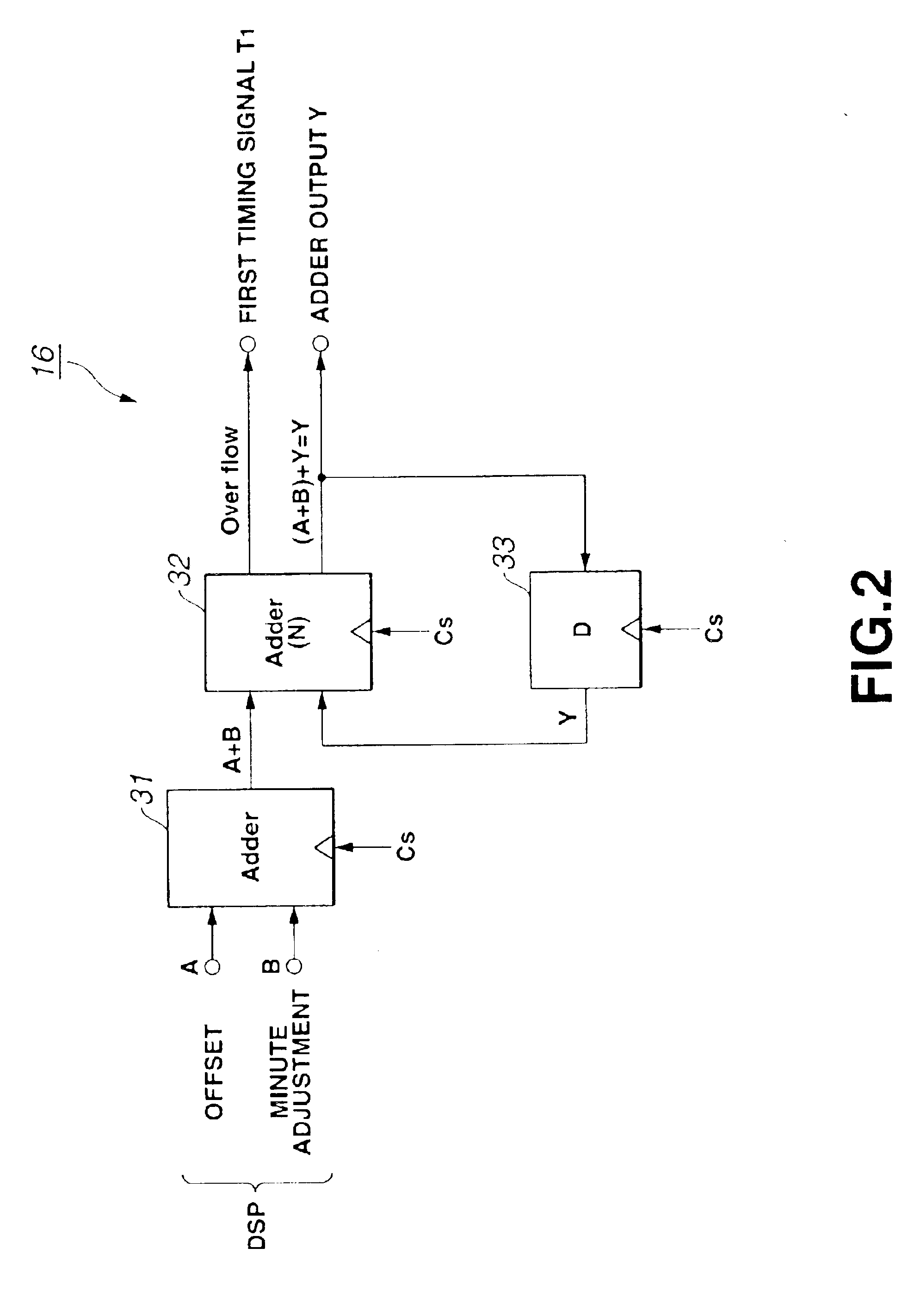Video processing apparatus for converting composite video signals to digital component video signals
a video signal and video signal technology, applied in the field of video signals, can solve problems such as interference signals, beat-like noise on the screen, and difficulty in manufacturing multi-type, digital choroma-decoders on one substrate or one semiconductor chip
- Summary
- Abstract
- Description
- Claims
- Application Information
AI Technical Summary
Benefits of technology
Problems solved by technology
Method used
Image
Examples
Embodiment Construction
[0022]An embodiment of the present invention, or a chroma-decoder, will be described.
[0023]The chroma-decoder is an apparatus that decomposes a composite video signal into a luminance signal and a color-difference signal and generates, from the luminance signal and the color-difference signal, a video signal that has a sampling clock frequency of 13.5-MHz as is defined by the ITU-R601 standard. The composite video signal input to the chroma-decoder complies with any TV broadcasting systems such as NTSC system, PAL system and SECAM system.
[0024]FIG. 1 is a block diagram of the chroma-decoder 1 according to the present invention.
[0025]As FIG. 1 shows, the chroma-decoder 1 comprises a system-clock oscillator 11, a digital signal processor (DSP) 12, an analog-to-digital (A / D) converter 13, a clamping circuit 14, a synchronous detector (SYNC circuit) 15, a first timing oscillator (DTO) 16, a first sampling-rate converter (SRC) 17, a luminance / chroma dividing circuit (Y / C) 18, a chroma-de...
PUM
 Login to View More
Login to View More Abstract
Description
Claims
Application Information
 Login to View More
Login to View More - R&D
- Intellectual Property
- Life Sciences
- Materials
- Tech Scout
- Unparalleled Data Quality
- Higher Quality Content
- 60% Fewer Hallucinations
Browse by: Latest US Patents, China's latest patents, Technical Efficacy Thesaurus, Application Domain, Technology Topic, Popular Technical Reports.
© 2025 PatSnap. All rights reserved.Legal|Privacy policy|Modern Slavery Act Transparency Statement|Sitemap|About US| Contact US: help@patsnap.com



